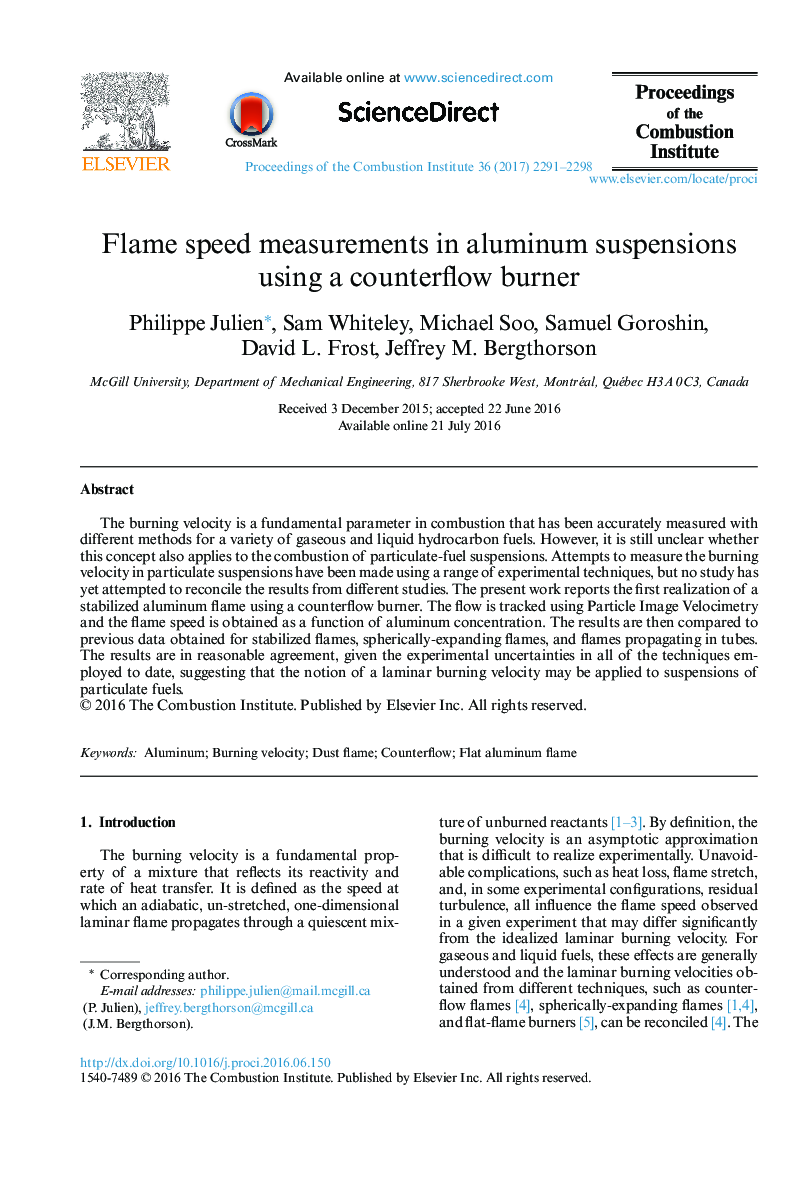| Article ID | Journal | Published Year | Pages | File Type |
|---|---|---|---|---|
| 6478311 | Proceedings of the Combustion Institute | 2017 | 8 Pages |
The burning velocity is a fundamental parameter in combustion that has been accurately measured with different methods for a variety of gaseous and liquid hydrocarbon fuels. However, it is still unclear whether this concept also applies to the combustion of particulate-fuel suspensions. Attempts to measure the burning velocity in particulate suspensions have been made using a range of experimental techniques, but no study has yet attempted to reconcile the results from different studies. The present work reports the first realization of a stabilized aluminum flame using a counterflow burner. The flow is tracked using Particle Image Velocimetry and the flame speed is obtained as a function of aluminum concentration. The results are then compared to previous data obtained for stabilized flames, spherically-expanding flames, and flames propagating in tubes. The results are in reasonable agreement, given the experimental uncertainties in all of the techniques employed to date, suggesting that the notion of a laminar burning velocity may be applied to suspensions of particulate fuels.
